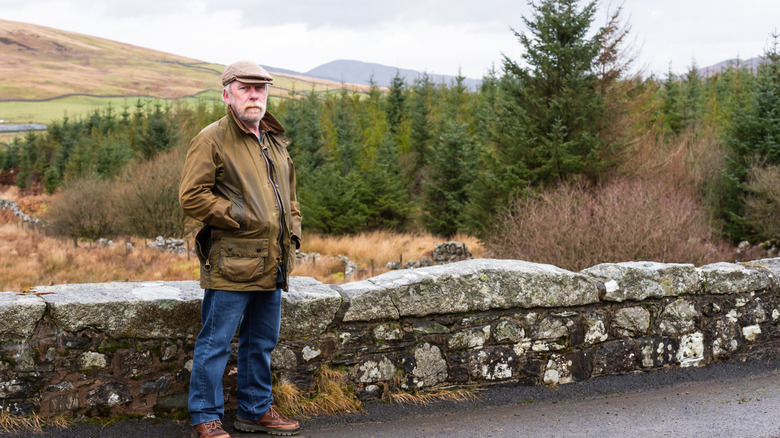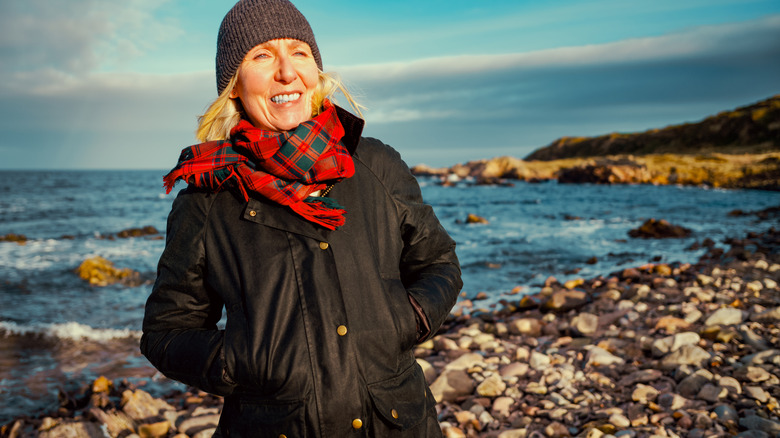Why This Popular Waterproof Clothing Item Is Less Useful For Hiking And Camping Excursions
Don't get us wrong: waxed jackets are designed to repel water, and they look great. For hundreds of years, these treated cotton coats have helped keep people dry; in the west, they're widely considered the first serious attempt at waterproofed clothing, and they're especially iconic in the rain-soaked British Isles. Hunters have long donned these waist-length jackets to chase game in the downs and moors of the English countryside. Waxed canvas garments were issued to British military personnel during World War II. With their collared tops, earth-toned colors, and rugged designs, waxed jackets speak to a long outdoor heritage.
But the truth is, they're not great for hiking. Sure, waxed jackets were an effective shell in centuries past — when there was no alternative — and the stiff fabric also protected against biting winds and occasional hailstones. Today, though, hikers have so many worthwhile waterproof options, from polyester rain jackets to polyurethane-coated ponchos, that the waxed jacket now feels more vintage than useful. Synthetic fibers have completely changed the game for prolonged treks, and whole generations have outfitted themselves in featherweight coats since the 1960s. They're generally less expensive as well; far from the heavy, bulky field coats of yore, this shockingly cheap outerwear is something hikers, bikers, and golfers swear by.
The pros and cons of waxed garments
Waxed jackets are still great for reasonable walks and car-camping trips, and match well with other time-honored clothes, like knit caps and wool sweaters. They're also a decent option for spending time on the water, especially on drizzly days. If you're willing to shell out a few hundred dollars for this antiquated vestment, the material does a remarkable job of keeping your dry, just as it has since the days of Shakespeare. As folksy and old-fashioned as it may sound, you can also use a layer of beeswax to waterproof certain boots and shoes.
In every way, though, rain gear has become lighter and more packable, essential qualities for someone hiking several strenuous miles in a single stretch. As temperatures fluctuate and precipitation changes, you can strip away a rain shell and stuff it into a modest backpack. Even an extra-large polyester rain jacket shouldn't weigh as much as a single pound, whereas a medium-sized wax jacket might weigh twice that. Then there's breathability: Modern waxed jackets are designed to ventilate fairly well, but they're not nearly as airy as their synthetic counterparts. In short, waxed jackets are perfect for fashion and milling around; ambitious hikers will benefit from modern alternatives. While you're figuring out what to wear on the trail, here's our ultimate guide to packing the best (and safest) hiking gear.

